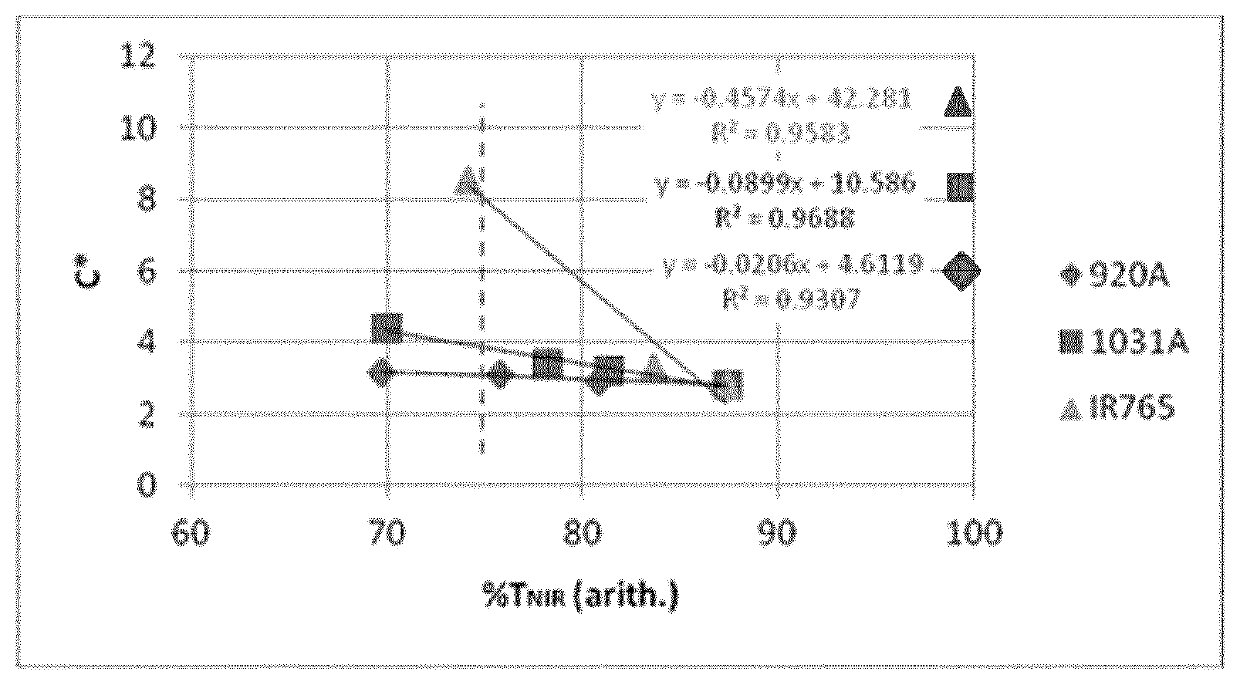Near infrared light-cutting optical articles with low residual color
a technology of optical articles and infrared light, applied in the field of optical materials comprising compounds, can solve the problems of reducing the color perception of wearers, so as to achieve the effect of short processing time, low cost, and easy incorporation of polymerizable compositions
- Summary
- Abstract
- Description
- Claims
- Application Information
AI Technical Summary
Benefits of technology
Problems solved by technology
Method used
Image
Examples
examples
[0105]1. Chemicals Used
[0106]Optical materials were prepared from a composition comprising polymerizable monomers, at least one near infrared absorber, dimethyltin dichloride as a catalyst (CAS No. 753-73-1), Eversorb 109® as a UV absorber offering protection against blue light (CAS No. 83044-89-7), Diaresin blue J® as a bluing agent (CAS No. 86090-40-6) and Zelec UN® as a mold release agent.
[0107]The monomers used in the present examples were norbonane diisocyanate (ISO, CAS No. 74091-64-8), the pentaerythritol tetrakis (3-mercaptopropionate) (THIOL1, CAS No. 7575-23-7), and 2,3-bis((2-mercaptoethyl)thio)-1-propanethiol (THIOL2, CAS No. 131538-00-6), in order to produce the MR8® polythiourethane matrix.
[0108]The near infrared absorbers according to the invention used in the examples were NIR-920A® (Cyanine dye from QCR Solutions Corp) and NIR-1031A® (from QCR Solutions Corp). Lumogen IR 765® (Quaterrylene dye from BASF) was used as a comparative near infrared absorber. In the MR8® ...
PUM
| Property | Measurement | Unit |
|---|---|---|
| wavelength range | aaaaa | aaaaa |
| wavelength range | aaaaa | aaaaa |
| wavelength range | aaaaa | aaaaa |
Abstract
Description
Claims
Application Information
 Login to View More
Login to View More - R&D
- Intellectual Property
- Life Sciences
- Materials
- Tech Scout
- Unparalleled Data Quality
- Higher Quality Content
- 60% Fewer Hallucinations
Browse by: Latest US Patents, China's latest patents, Technical Efficacy Thesaurus, Application Domain, Technology Topic, Popular Technical Reports.
© 2025 PatSnap. All rights reserved.Legal|Privacy policy|Modern Slavery Act Transparency Statement|Sitemap|About US| Contact US: help@patsnap.com

